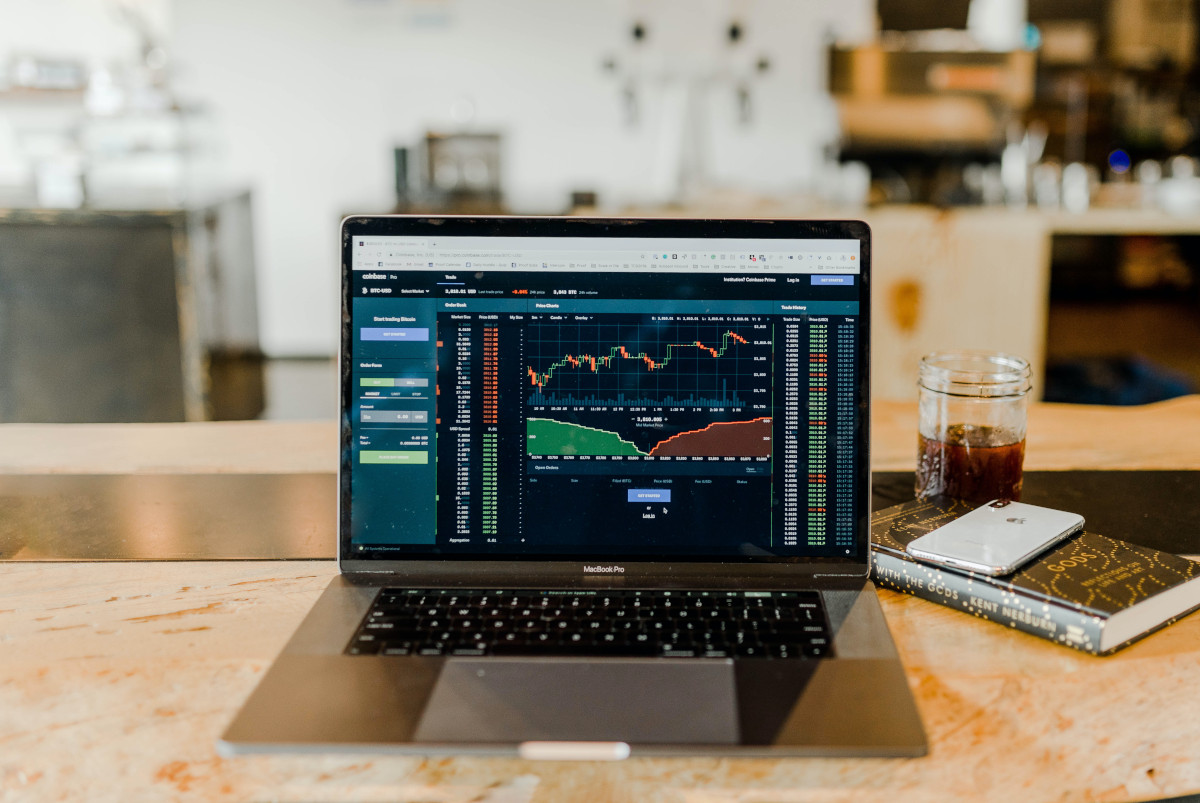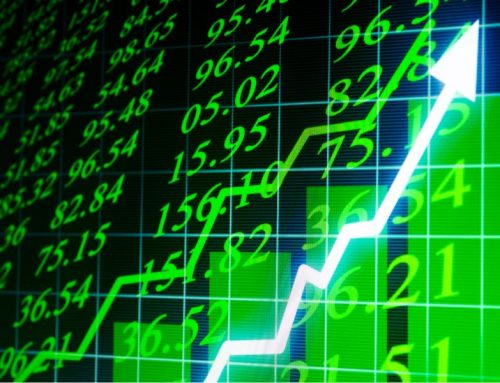Timing the market vs time in the market – a subtle variance in phrasing, but a dramatic difference in investment strategy. While these two principles may sound similar, they speak to opposite ends of the spectrum in terms of how you should invest your capital.
Those who advocate for market timing believe in investing more strategically. Why would you continue making investments during periods of poor economic performance? Instead, you can convert to cash and buy back in when the market corrects, protecting your portfolio and earning higher profits.
On the other hand, those who believe time in the market is the superior strategy say that not only is it impossible to “time the market”, but spending more time in the market leads to higher returns in the long run.
So, which side comes out on top in the end? Is one of these strategies necessarily better than the other? You’ve come to the right place. Today, we’re going to take a detailed look at the debate of time in the market vs timing the market.
Our goal is to show you how these strategies differ and help you choose the right one based on your goals. No matter which you end up choosing, we’ll empower you with a few key tips for maximizing your returns towards the end of our conversation today.
Timing the Market vs Time in the Market: What’s the Difference?
First, let’s make it crystal clear what we’re even talking about here. We briefly summarized each strategy above, but now, we’re going to fully unpack the differences in mindset between timing the market vs time in the market.
What Does Timing the Market Mean?
Timing the market is an investment strategy that revolves around making buy and sell decisions based on predicting market movements.
Investors who attempt to time the market seek to capitalize on favorable market conditions by buying when prices are low and selling when prices are high. This approach often involves the use of technical and fundamental analysis to identify market trends and potential turning points.
The primary goal of market timing is to maximize returns and minimize losses by avoiding periods of market downturns and participating in periods of growth.
But, critics of market timing argue that it’s difficult to consistently and accurately predict market movements. Furthermore, naysayers claim that attempting to do so may result in missed opportunities, increased trading costs, and emotional decision-making.
However, when executed effectively, this strategy can lead to higher returns and better risk management compared to a passive buy-and-hold strategy. We’ll show you how later. First, let’s introduce the other side of the coin.
What Does Time in the Market Mean?
Time in the market is an investment strategy that emphasizes the importance of staying invested for a long period, rather than trying to predict short-term market fluctuations.
This approach is based on the belief that, over time, the stock market will generate positive returns, and investors who remain invested will benefit from the power of compounding.
By consistently investing and holding onto their investments, investors can take advantage of market growth and reduce the impact of short-term volatility.
Moreover, those who adhere to this approach believe that they’re able to take advantage of more opportunities. They believe that a long-term, buy-and-hold strategy is more likely to yield favorable returns, as it allows investors to ride out market fluctuations and benefit from overall market growth.
This approach often involves a well-diversified portfolio and regular contributions, with a focus on asset allocation and risk tolerance. But, does it actually work out in the long run? Or, do those who spend unnecessary time in the market subject themselves to extra risk/downside?
Below, we’ll get into the question that really brought you here today: which is better, timing the market vs time in the market?
Which is Better Timing the Market vs Time in the Market?
Ultimately, your goals as an investor will influence whether you should follow the principles of time in the market vs timing the market.
If you want the highest returns possible while preventing your portfolio from unnecessary downside exposure, timing the market makes more sense.
On the other hand, if you want a strategy that requires minimal work and are willing to settle for lower returns – watching your portfolio diminish during times of poor economic performance – time in the market might make more sense.
With that said, we’ll compare time in the market vs timing the market below based on a few key considerations: profit potential, risk, flexibility, efficient capital allocation, and psychological benefits.
Potential for Higher Returns
The goal of any trading strategy is profitable trading. But, some strategies – like day trading or swing trading – open the door for much higher returns. And in regard to timing the market vs time in the market, this is the first large distinction between the two strategies.
While time in the market relies on a passive buy-and-hold strategy, timing the market actively seeks out opportunities for higher gains. By strategically entering and exiting the market, market timers can capitalize on favorable trends and avoid the negative impact of downturns.
This approach can lead to more significant gains over time, unlike the time in the market strategy, which may suffer during extended periods of poor market performance.
Think about it like this – the most successful swing traders don’t focus on time in the market. They take a far more active approach to managing their positions and finding new opportunities.
Active Risk Management
A major drawback of time in the market is its passive approach to risk management. When you see signs of an upcoming trend reversal – or even an economic downturn in the market as a whole – you sit on your hands and weather the storm. And the end result is a loss of capital in your portfolio – for no logical reason.
In contrast, timing the market involves closely monitoring market conditions and adjusting your investment strategy accordingly. This allows investors to protect their portfolios during economic uncertainty and potentially minimize losses, something the time-in-the-market strategy may struggle with due to its long-term, passive nature.
While some claim that timing the market adds unnecessary stress to the investor’s life, we feel that the peace of mind you gain through risk management alone outweighs any of the extra work associated with it.
Flexibility and Adaptability
Financial markets are ever-changing, and timing the market offers the flexibility and adaptability needed to navigate these shifts. Unlike the static buy-and-hold strategy associated with time in the market, market timing allows investors to adjust their strategies based on evolving conditions.
This agility can be invaluable in an unpredictable investment landscape and offers a significant advantage over a more rigid, long-term approach. When conditions shift, you’re able to continue making money by shorting ETFs or shorting a stock. In this sense, you’re able to hedge against inflation or invest smarter during a stock market recession.
More Efficient Capital Allocation
Market timing enables investors to allocate their capital more efficiently than time in the market strategies. By identifying and moving assets from underperforming sectors or stocks into those with stronger growth potential, investors can make their money work harder for them.
In comparison, time in the market strategies may result in capital being locked up in underperforming assets for extended periods, hindering overall portfolio performance.
Psychological Benefits
For some investors, the active nature of market timing can provide a greater sense of control and involvement in their investments compared to the passive approach of time in the market.
This can lead to increased confidence and satisfaction with their investment strategy. The ability to proactively manage risk and adapt to changing market conditions can provide a sense of empowerment, making the investment experience more enjoyable and rewarding.
So, Which is Better Timing the Market or Time in the Market?
While both market timing vs time in the market are strategies with their own unique merits, the former can offer superior returns, more effective risk management, and greater flexibility compared to time in the market.
However, it’s important to recognize that market timing is not for everyone, and the potential risks and challenges associated with this approach should be carefully considered.
Ultimately, the best strategy for you depends on your individual goals, risk tolerance, and investment style.
Time in the market may be more suitable for passive, long-term investors while timing the market can be a better fit for those who are more active and experienced in their investment approach. But really, either approach can be enhanced with the help of VectorVest…
Whether You Prefer Time in the Market vs Timing the Market, Harness the Power of VectorVest!
There are two downsides to market timing that are commonly referenced. One of these is the difficulty of consistently executing this strategy, and the other is the extra work associated with it. But, both of these drawbacks can be eliminated through the VectorVest stock analysis system.
VectorVest is built upon a proprietary stock rating system that implements profound elements of market timing. As a result, the system is able to tell you what to buy, when to buy it, and when to sell it.
The best part is that you’re given these insights in just seconds. No more complex technical trading indicators, no more hours of company research. You can free yourself from the screen and spend more time doing what you actually enjoy. With just 3 simple ratings, your new approach to analyzing a stock will have you wishing you discovered the system sooner.
And, even if you decide to stick with time in the market instead of timing the market, you can at least rely on the VectorVest system to uncover the right opportunities to invest in. With a pre-curated stock screener for any strategy, you never have to wonder where your next move will come from. The perfect stock picks on any given day are in our system waiting to be discovered.
The system has called every major market move successfully for decades in a row, and it has outperformed the S&P 500 by 10x in that time frame. It can help you do the same starting today. Get a free stock analysis and see what’s possible with VectorVest!
Bringing Our Conversation on Timing the Market vs Time in the Market to a Close
You came here wondering which was better: time in the market vs timing the market. While each has its pros and cons, one stands alone as the premier approach to investing – and that’s market timing.
Why would you subject yourself to unnecessary downside when you could be a bit more active in portfolio management? And, why would you not try to time your trades to earn higher profits?
In our opinion, the decision between market timing vs time in the market is a no-brainer. And hopefully, you’re able to see for yourself why that is after reading through this comprehensive guide.
But for now, it’s time we bring our conversation on time in the market vs timing the market to a close. Now, it’s time to take your findings and adjust your strategy accordingly!








Leave A Comment